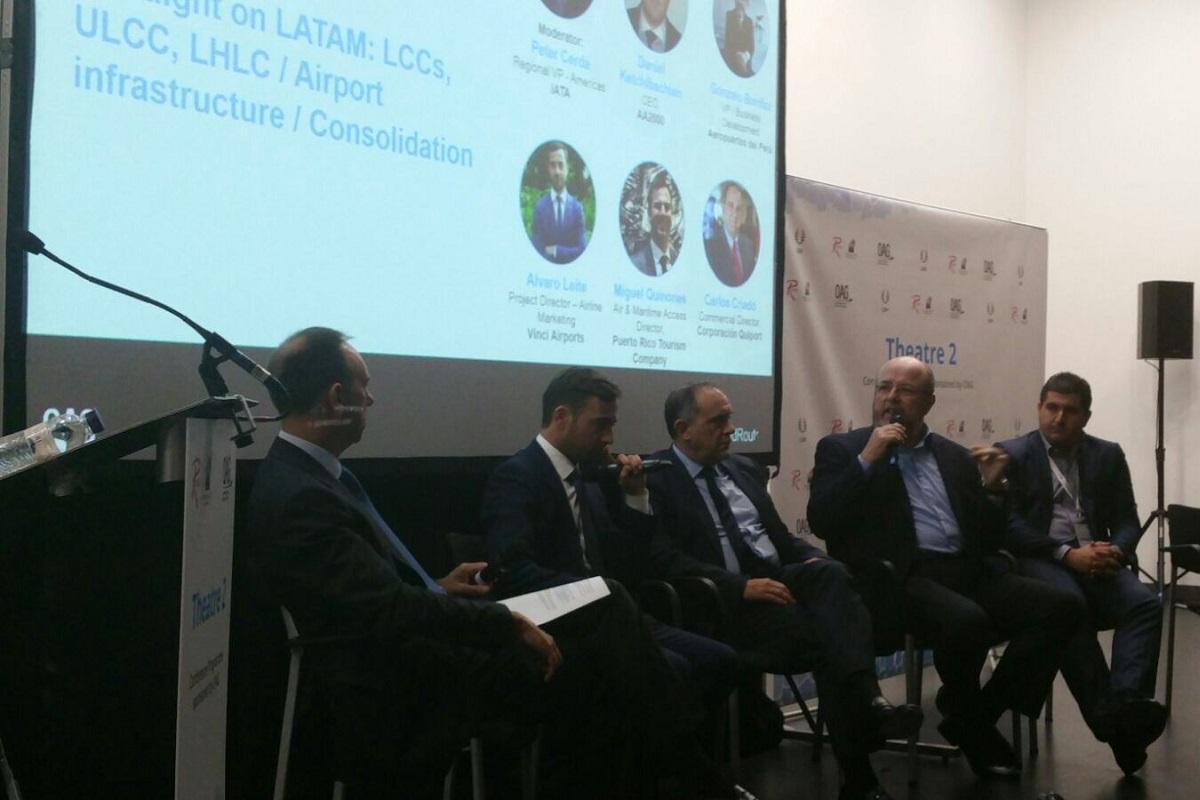Latin American airlines and airports 'must work together' to overcome challenges

The Latin American and Caribbean market is forecast to grow by 358 million new passengers over the next 20 years, but significant challenges are restricting growth in certain countries.
In Brazil, for example, an estimated 100 million people in Brazil don’t travel by air.
At World Routes 2017, our Spotlight on LATAM panel session explored the issues surrounding low-cost carriers, airport infrastructure constraints and market consolidation.
The panel, moderated by Peter Cerdá from IATA, heard from Gonzalo Bonifaz from Aeropuertos del Perú; Daniel Ketchibachian, EZE Airport; Alvaro Leite from Vinci Airports; and Carlos Criado, from Corporación Quipor.
Criado explained that high taxation, protectionism and a lack of awareness about the aviation industry among government authorities are major issues, saying taxes in Ecuador in particular makes it difficult to be competitive with other airports and other countries.
Given these barriers to market, why then is Vinci investing in airports in Dominican Republic and Chile?
"In each barrier there’s an opportunity," says Alvaro Leite, who is the project director, airline marketing at Vinci Airports.
"We see an untapped potential in South America. The forecasted growth in the coming years is much higher than other regions.
“We go for growth in developing markets - we've done that in Europe and Asia. And we believe in our ability to develop the market."
The panel was asked what airlines and airports need to do to ensure success over the next five years and to accommodate demands.
Leite said: “I think we all need to work together and be realistic. I believe that there is a lot of liberalisation that needs to come in the whole of South America.”
Criado agreed and said there needs to be a more flexible approach to improve connectivity.
“Airlines and airports have to combine our way of thinking and doing business,” added Gonzalo Bonifaz. “It’s essential we work together.”
